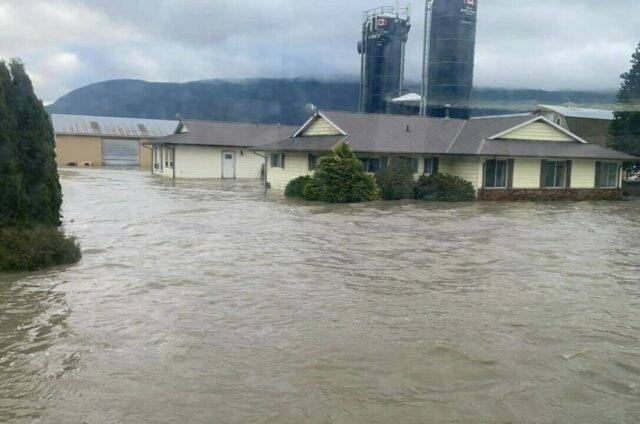The damage caused by flooding across B.C. could have been curtailed with better river forecasting and flood prevention infrastructure resources says an analyst for the B.C. office of the Canadian Centre for Policy Alternatives.
Ben Parfitt uncovered an 11-year-old internal environment ministry report that raised concerns about staffing levels of the River Forecast Centre being far below similar operations in Alberta and Oregon. The report states the river forecast centre — the first link in the provincial emergency response protocol chain — needs more resources to provide effective critical warnings to vulnerable communities threatened by floods.
Parfitt said the 38-page report, written by Jim Mattison, a former senior policy ranking member of the Ministry of Environment, including B.C.’s former water comptroller, submitted in 2010 called for the river forecast centre staffing level to be increased from 5.5 to a minimum of 12.
Mattison’s report noted that in Alberta, which is nearly 300,000 square kilometres smaller than B.C., the number of people working in the river forecast centre was 24, and in the U.S. Pacific Northwest, which is 200,000 sq. km. smaller than B.C., the river forecast centre employed 16 people.
Even in 2010, Mattison also alluded to the potential impact of climate change, saying “rain intensities will be higher and durations will be longer.”
In an interview with Black Press Media, Parfitt said Mattison’s recommendations had not been acted upon in the years since.
While the reality of flood damage could not be avoided, Parfitt suggests it could have been curtailed with a better flood warning system, noting Whatcom County farmers in Washington were warned to brace for heavy rainfall days in November before a similar notice was given to Sumas Prairie farmers in the Fraser Valley.
In his CCPA report, Parfit cited the need for the province to reverse a past decision that downloaded responsibilities for infrastructure, diking and flood protection from the province to municipalities and regional districts.
“Whether offloading costs for dike maintenance was the right thing to do or not needs to be revisited, and the province needs to reprioritize which dike areas are most vulnerable and in need of immediate upgrades,” Parfitt said.
“These dikes often encroach on multiple regional and municipal areas which raises concerns about the consistency of maintenance and needed upgrades. That should be a provincial responsibility.”
Parfitt says time will tell how the provincial government responds to environment-related issues, regardless of which party is in power.
“Some of these shortfalls have been allowed to continue from government to government, but in that time large areas of our forest land have been logged, wildfire burned or killed by disease,” he said.
“The reality is the hydrological regime has dramatically changed in our province. We have seen now how things can go horribly wrong with floods and we have to learn from this.”
READ MORE: B.C.’s year of extreme weather ‘consistent’ with climate change, meteorologist says
READ MORE: Images show swift runoff water flowing over closed Highway 1 section near Hope
Like us on Facebook and follow us on Twitter.
Want to support local journalism? Make a donation here.
